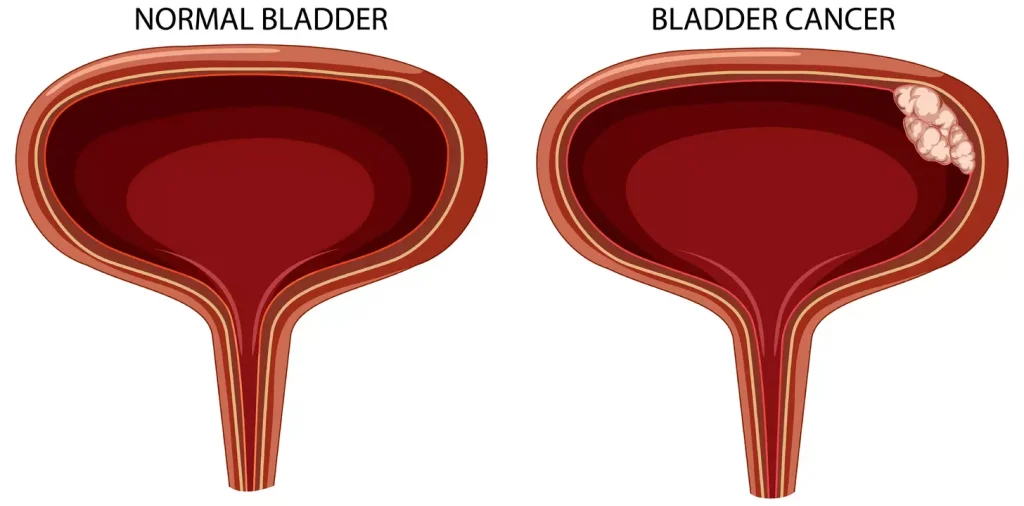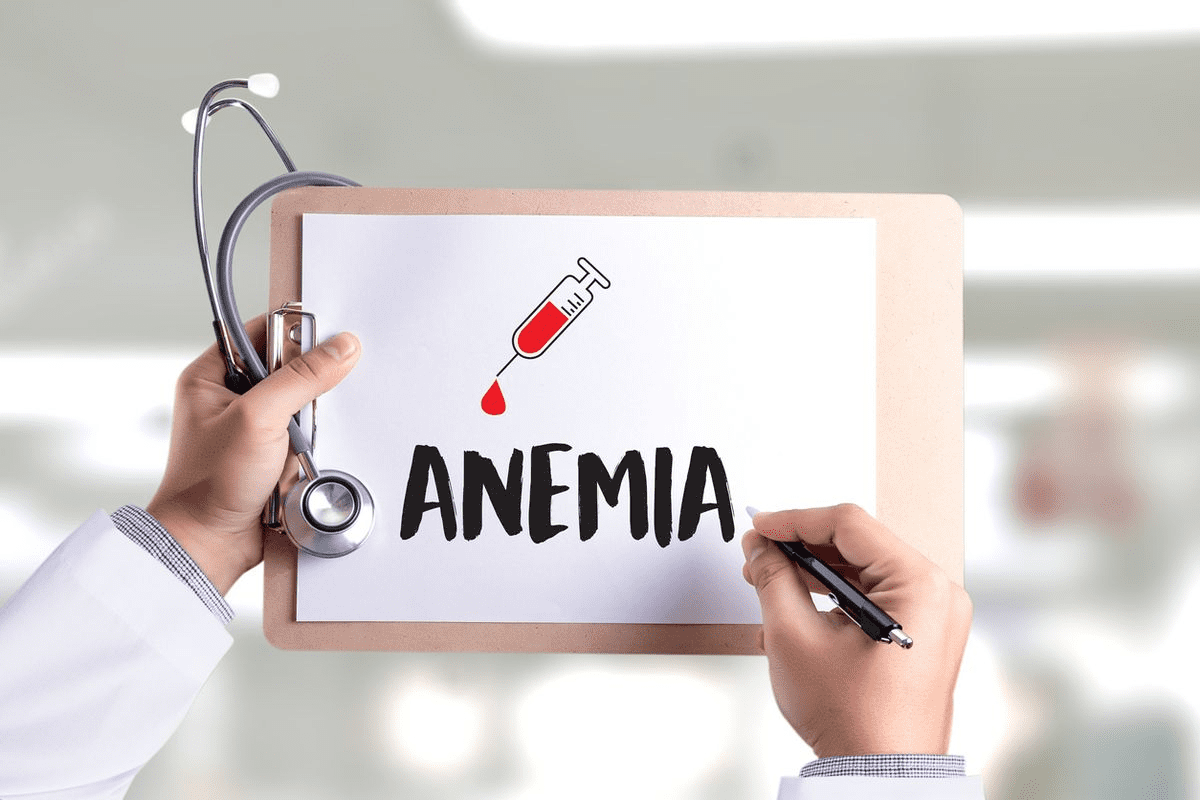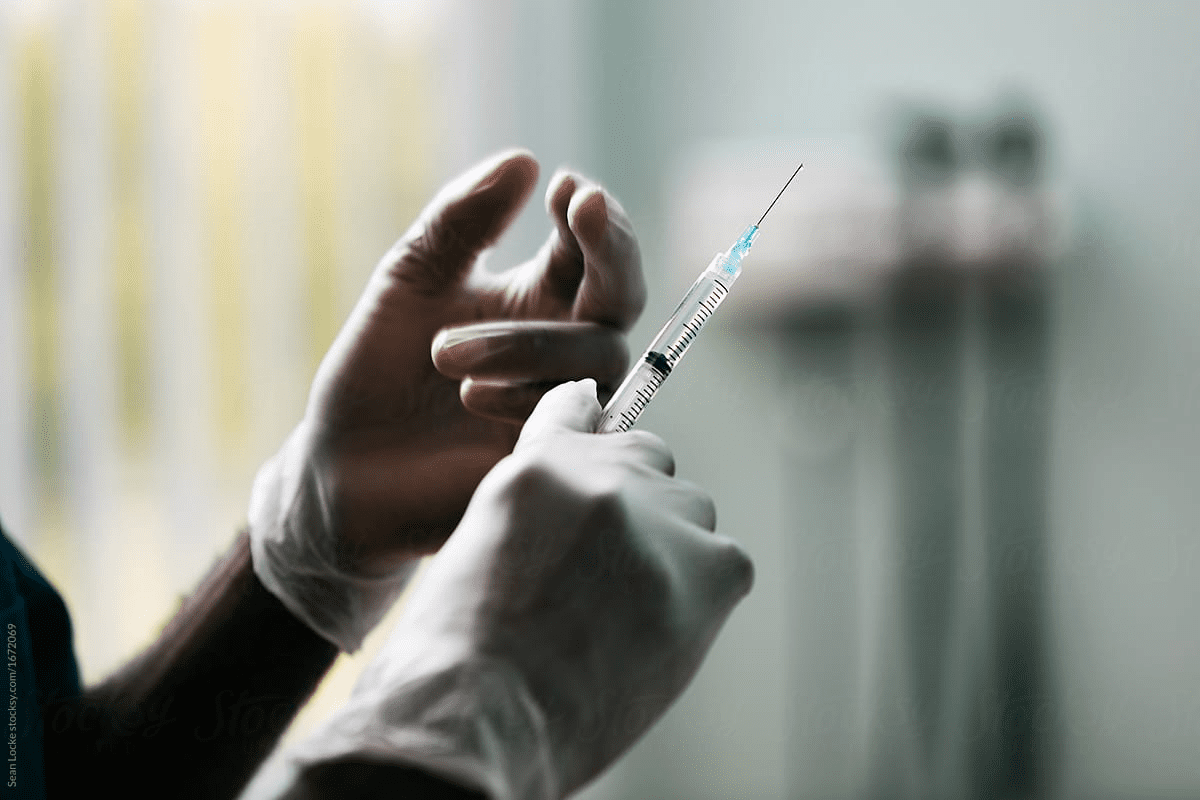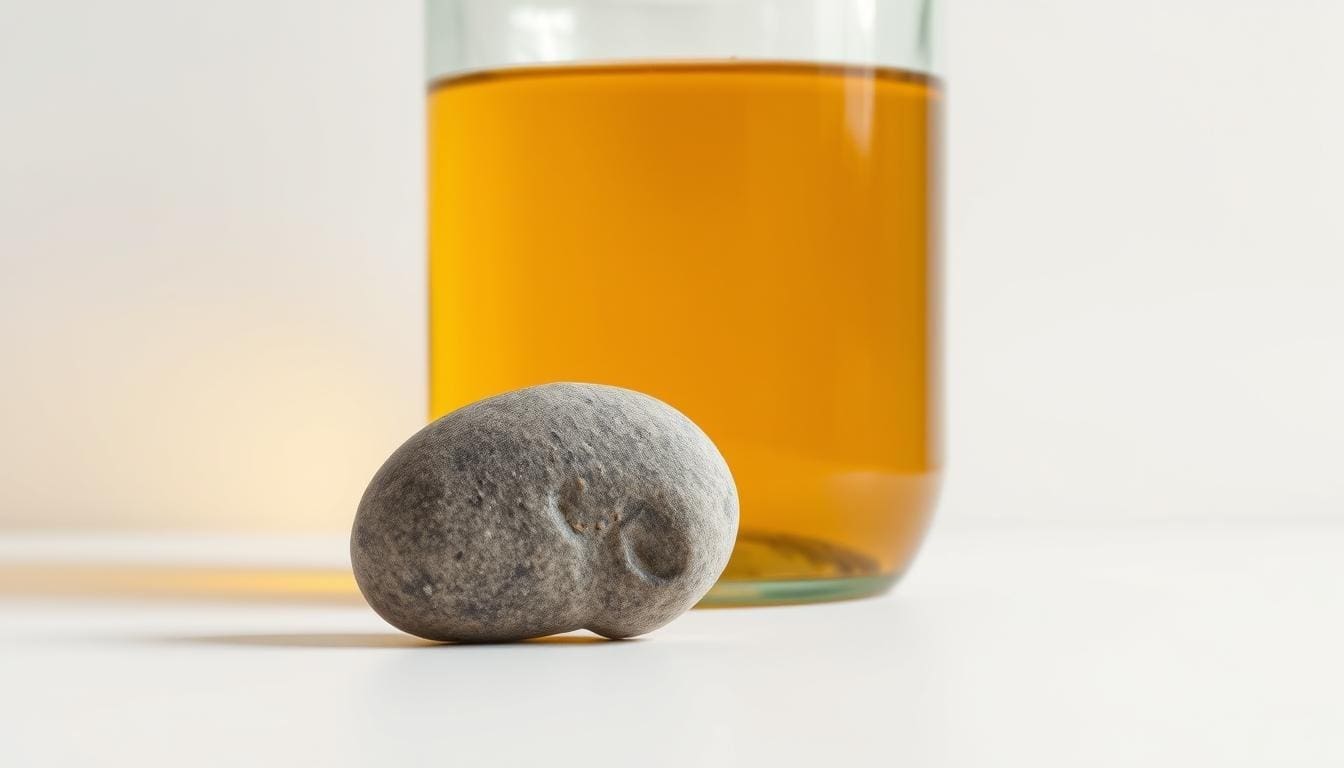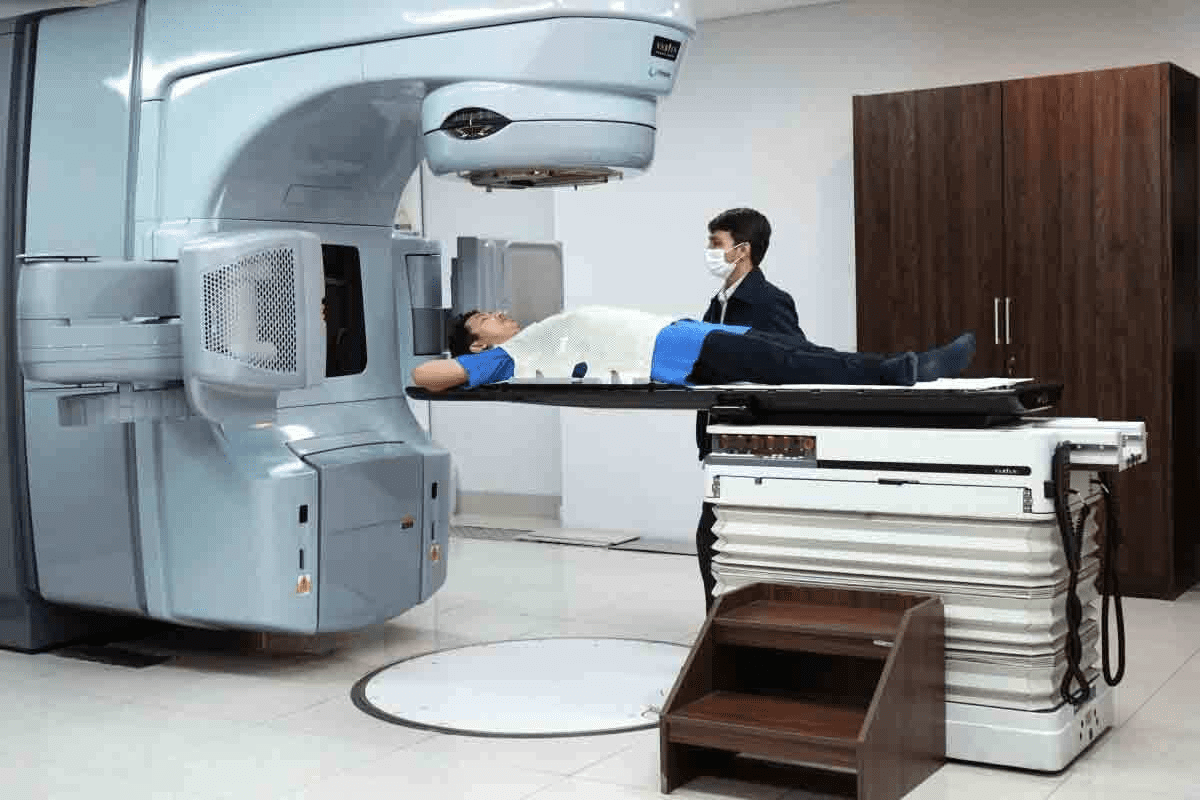Last Updated on November 27, 2025 by Bilal Hasdemir

When you’re diagnosed with early-stage bladder cancer, you want a treatment that works well. At Liv Hospital, we offer top-notch healthcare and support for international patients.
Bacillus Calmette-Guérin (BCG) therapy is a key treatment for bladder cancer. It uses your body’s immune system to fight cancer. Let’s look at the important facts about BCG therapy and its role in treating bladder cancer.
Key Takeaways
- BCG therapy is a specialized immunotherapy used to treat high-risk non-muscle invasive bladder cancer.
- It is the standard of care after surgery for high-risk NMIBC, including carcinoma in situ and early-stage tumors.
- BCG therapy stimulates the immune system to fight cancer cells.
- Understanding BCG therapy is key for patients with NMIBC.
- Liv Hospital is dedicated to providing world-class healthcare and support for international patients.
Understanding Non-Muscle Invasive Bladder Cancer
Non-muscle invasive bladder cancer is a big part of bladder cancer cases. It has its own set of characteristics and treatment methods. We will look into its types, stages, risk factors, and how it’s diagnosed.
Types and Stages of Bladder Cancer
Bladder cancer is divided into two main types: non-muscle invasive bladder cancer (NMIBC) and muscle-invasive bladder cancer (MIBC). NMIBC stays in the bladder lining, while MIBC goes deeper. NMIBC makes up about 70-80% of bladder cancer cases, which is why it’s a big focus for treatment and research.
Staging bladder cancer is key for knowing the prognosis and treatment. NMIBC is staged as Ta, T1, or Tis based on how far the tumor has spread. “The right staging is vital for picking the best treatment,” say top urological oncologists.
Risk Factors and Diagnosis
Several things can increase your chance of getting bladder cancer, like smoking, being around certain chemicals, and genetics. Knowing these risk factors helps in catching the disease early. Smoking is the biggest risk factor, causing about half of all bladder cancer cases.
Diagnosing bladder cancer involves imaging, cystoscopy, and biopsy. Cystoscopy lets doctors see the bladder lining directly. Biopsy gives tissue samples for lab tests. “Finding bladder cancer early through these methods can greatly improve treatment results,” say recent guidelines.
We will look into treatments for NMIBC, like BCG therapy, later. For now, knowing the basics of NMIBC is key to understanding its management.
“The management of non-muscle invasive bladder cancer requires a nuanced approach, balancing the need for effective treatment with the minimization of side effects.”
What is BCG Therapy for Bladder Cancer?
BCG therapy for bladder cancer has a long history. It started as a tuberculosis vaccine. Now, it’s a key treatment for non-muscle invasive bladder cancer (NMIBC).
The History of Bacillus Calmette-Guérin (BCG)
BCG was created in the early 1900s by Albert Calmette and Camille Guérin. They made it to fight tuberculosis, a big health problem back then. They used a weakened form of Mycobacterium bovis, which causes TB in cattle.
BCG was a big step in fighting TB. But it also found a new use in treating cancer.
From Tuberculosis Vaccine to Cancer Treatment
The shift of BCG from TB vaccine to cancer treatment is interesting. In the 1970s, it was found to treat non-muscle invasive bladder cancer. This was because BCG boosts the immune system, helping fight cancer cells.
Now, BCG is a main treatment for NMIBC. It’s put directly into the bladder through a catheter. This method helps avoid many side effects and boosts the immune system’s fight against cancer.
When BCG Therapy is Recommended
BCG therapy is mainly for patients with high-risk non-muscle invasive bladder cancer. This includes big, high-grade tumors or those that have grown into the lamina propria. Doctors decide on BCG based on the cancer’s stage, grade, and the patient’s health.
Healthcare providers see BCG as a first choice for high-risk NMIBC. It’s effective in lowering the chance of cancer coming back or getting worse. Knowing BCG’s history helps patients understand its benefits.
Essential Fact #1: BCG is an Immunotherapy, Not Chemotherapy
BCG therapy is a special kind of treatment for bladder cancer. It’s different from chemotherapy. Knowing this is important for patients to understand.
Understanding Immunotherapy vs. Chemotherapy
Immunotherapy and chemotherapy are two ways to fight cancer. Chemotherapy uses drugs to kill cancer cells. But, it can harm healthy cells too.
Immunotherapy boosts the body’s immune system to fight cancer. BCG therapy is a type of immunotherapy. It uses a weakened form of tuberculosis bacteria in the bladder.
This method helps the immune system attack bladder cancer cells. It’s focused on the bladder, so it’s less likely to cause widespread side effects.
How BCG Stimulates the Immune System Against Cancer
BCG therapy works by activating the immune system. Here’s how it happens:
- The BCG bacteria are put into the bladder through a catheter.
- The bacteria stick to the bladder wall, starting an immune response.
- Immune cells, like macrophages and T-cells, are called to fight the infection.
- These cells also attack and kill bladder cancer cells.
To learn more about immunotherapy, visit our page on what is immunotherapy.
Understanding BCG as an immunotherapy helps patients see how it fights bladder cancer. This knowledge prepares them for treatment and its possible side effects.
Essential Fact #2: How BCG Therapy Works in the Bladder
BCG therapy is effective against bladder cancer because it boosts the local immune response in the bladder. It does this by introducing the Bacillus Calmette-Guérin vaccine into the bladder. This action triggers an immune reaction against cancer cells.
The Science Behind BCG’s Mechanism of Action
The process of how BCG works is quite complex. When BCG is put into the bladder, it sticks to the lining. The immune system’s cells, like macrophages and natural killer cells, recognize it. This recognition starts a chain of immune reactions that destroy cancer cells.
Here’s a breakdown of the steps:
- The BCG bacteria are taken up by immune cells in the bladder lining.
- This uptake leads to the production of various cytokines and chemokines, which are signaling molecules that recruit more immune cells to the site.
- The recruited immune cells, including T cells, then target and destroy the bladder cancer cells.
Local Immune Response in the Bladder Lining
The local immune response from BCG therapy is key to its success. By putting the BCG vaccine directly into the bladder, we target the immune response at the bladder lining. This is where the cancer cells are.
The local immune response involves:
| Immune Component | Role in BCG Therapy |
|---|---|
| Macrophages | Engulf BCG bacteria, initiating the immune response |
| Natural Killer Cells | Recognize and destroy cancer cells |
| T Cells | Specifically target and eliminate bladder cancer cells |
Understanding BCG therapy’s local action in the bladder is key to its success against non-muscle invasive bladder cancer. This targeted approach reduces systemic side effects. It also boosts the immune response against cancer cells.
Essential Fact #3: The Complete BCG Treatment Protocol
It’s key for patients with non-muscle invasive bladder cancer to know the BCG treatment protocol. This protocol has several phases to make treatment as effective as possible.
Induction Phase: Weekly Treatments for Six Weeks
The first part of BCG treatment is the induction phase. Here, BCG is put directly into the bladder through a catheter every week for six weeks. This step helps the immune system fight cancer cells in the bladder lining.
During this phase, patients are watched for any bad reactions or side effects. It’s important to stick to the treatment plan given by the doctor for the best results.
Maintenance Therapy: Three-Year Treatment Plan
After the induction phase, maintenance therapy starts. This involves BCG treatments at specific times over three years. This long-term plan helps lower the chance of cancer coming back.
For more details on the maintenance therapy schedule, patients can look at the BC Cancer Agency’s guidelines on BCG treatment for bladder cancer.
What to Expect During a BCG Procedure
A healthcare professional will put a catheter into the bladder during a BCG procedure. Then, they will add the BCG solution. After that, the catheter is taken out, and patients are asked to keep the solution in their bladder for two hours before they urinate.
To get the most out of the treatment, patients should:
- Not drink fluids for a few hours before the procedure to avoid needing to urinate.
- Change positions every 15 minutes to make sure the BCG solution covers the whole bladder.
- After urinating, disinfect the toilet with bleach to stop the spread of BCG bacteria.
By following the whole BCG treatment protocol, patients can greatly improve their treatment success.
Essential Fact #4: Effectiveness and Success Rates of BCG Therapy
BCG therapy is backed by strong clinical evidence. It shows great promise in fighting non-muscle invasive bladder cancer (NMIBC). Studies prove it can improve patient outcomes significantly.
Clinical Evidence for Reducing Recurrence and Progression
Many clinical trials have shown BCG therapy’s power. A meta-analysis in the Journal of Urology found a 31% lower risk of recurrence with BCG compared to chemotherapy. It also helps prevent disease progression, which can avoid harsher treatments like cystectomy.
“BCG immunotherapy is the top choice for treating high-risk NMIBC,” says a top urologist. This view is shared by many clinical guidelines, which suggest BCG as the first treatment for high-risk NMIBC.
Comparing Induction-Only vs. Maintenance Therapy Outcomes
BCG therapy’s success can be boosted by knowing the difference between induction-only and maintenance therapy. Induction involves weekly BCG for six weeks. Maintenance therapy goes on for years.
Maintenance BCG therapy offers better results than induction-only therapy. A European Urology journal study found it greatly lowers recurrence and progression risks in high-risk NMIBC patients.
BCG Therapy Success Factors
Several factors affect BCG therapy’s success. These include the tumor’s stage and grade, patient adherence, and any health issues. Choosing the right patients and dosing is key to BCG’s success.
Healthcare providers must watch patients closely during and after BCG therapy. They should adjust treatment plans to manage side effects or concerns.
Essential Fact #5: Managing Side Effects of BCG Treatment
It’s important for patients to know about the side effects of BCG therapy. BCG is a top treatment for bladder cancer but can have side effects. We’ll look at common side effects, how long they last, and ways to feel better. We’ll also talk about serious complications to watch out for.
Common Side Effects and Their Duration
BCG therapy can lead to side effects like needing to pee a lot, feeling urgent, and discomfort. These side effects are usually not too bad and don’t last long. They often go away within a few days after treatment.
| Side Effect | Typical Duration |
|---|---|
| Urinary Frequency | 1-3 days |
| Urinary Urgency | 1-3 days |
| Discomfort | 1-5 days |
Serious Complications to Watch For
Even though rare, serious problems can happen with BCG therapy. It’s key for patients to know about these risks and tell their doctor right away. Serious issues include severe infections or allergic reactions.
“Patients should be informed about the possible risks and benefits of BCG therapy to make informed decisions about their care.”
Strategies to Minimize Discomfort
There are ways to lessen discomfort during and after BCG therapy. Drinking lots of water, avoiding things that can irritate the bladder, and using medicine to help symptoms are some strategies.
- Drink plenty of water to help flush out the bladder.
- Avoid spicy foods and caffeine that can irritate the bladder.
- Use over-the-counter pain relievers as directed by your healthcare provider.
Managing side effects is a big part of BCG therapy. Knowing about common side effects, serious complications, and how to feel better helps patients get through their treatment better.
BCG Treatment Challenges and Alternatives
Understanding the challenges of BCG therapy is key in bladder cancer treatment. BCG has been a mainstay for non-muscle invasive bladder cancer. Yet, it comes with its own set of hurdles.
BCG Shortage Issues
One big challenge is the BCG shortages. These shortages can mess up treatment plans, affecting patient results. The reasons for these shortages include manufacturing problems, supply chain issues, and higher demand.
To deal with BCG shortages, doctors are looking at new treatment plans. They are also making the most of the BCG they have. This means focusing on the most at-risk patients and exploring other treatments for those who might not benefit from BCG.
When BCG Fails: Next Treatment Options
BCG doesn’t work for everyone. For those who see their cancer come back or grow despite BCG, other treatments are needed. Intravesical chemotherapy is one option, where chemo is put directly into the bladder.
Other choices include radical cystectomy, which is removing the bladder. This is often for high-risk cases or when BCG doesn’t work. Clinical trials with new treatments also offer hope for better results.
Emerging Therapies for Bladder Cancer
The field of bladder cancer treatment is growing, with new emerging therapies on the horizon. These include immunotherapies, targeted therapies, and gene therapies. Each aims to fight cancer in different ways.
One of the most promising areas is checkpoint inhibitors, a type of immunotherapy. Other new approaches involve combination therapies, combining different treatments for better results.
As research keeps moving forward, we can expect even more treatments for bladder cancer. This will give patients and doctors more options.
Conclusion: Living Well During and After BCG Therapy
BCG therapy is a key part of treating bladder cancer. It helps manage non-muscle invasive bladder cancer. To live well with BCG therapy, it’s important to know its effects and follow-up care.
After BCG therapy, regular check-ups and a healthy lifestyle are key. This helps lower the chance of cancer coming back. Patients should stay informed and work closely with their doctors to keep an eye on their health.
Knowing about BCG therapy helps patients understand their treatment better. We aim to support patients fully, giving them the care and advice they need for the best results.
What is BCG therapy for bladder cancer?
BCG (Bacillus Calmette-Guérin) therapy is a treatment for bladder cancer. It uses a weakened form of tuberculosis bacteria in the bladder. This helps the immune system fight cancer cells.
How does BCG therapy differ from chemotherapy?
BCG therapy boosts the immune system to fight cancer. It doesn’t directly kill cancer cells like chemotherapy does. So, it’s an immunotherapy, not chemotherapy.
What are the common side effects of BCG therapy?
Side effects include frequent urination, urgency, and bladder discomfort. You might also feel flu-like. These effects are usually short-term and can be managed.
How is BCG therapy administered?
BCG therapy is given through a catheter into the bladder. You’ll get it once a week for six weeks. Then, you’ll have maintenance treatments.
What is the success rate of BCG therapy for bladder cancer?
BCG therapy is very effective against bladder cancer. It reduces recurrence and progression. Studies show it’s better with maintenance therapy than just a few treatments.
What happens if BCG therapy is not effective?
If BCG doesn’t work, other treatments might be tried. This could include other immunotherapies, chemotherapy, or surgery like cystectomy.
Are there any alternatives to BCG therapy?
Yes, there are other treatments for bladder cancer. These include other immunotherapies, chemotherapy, and new therapies like gene therapy and targeted therapy.
How can I minimize the side effects of BCG therapy?
To reduce discomfort, drink plenty of water and avoid irritants. Use medications as directed. Stick to the treatment plan and tell your doctor about any severe side effects.
What is the cost of BCG therapy?
BCG therapy costs vary by location, provider, and insurance. Talk to your doctor about costs and coverage.
How often are follow-up appointments needed after BCG therapy?
Follow-ups are key after BCG therapy. They help watch for cancer return and manage side effects. Your doctor will decide how often you need them.
Can BCG therapy be used in combination with other treatments?
Yes, BCG therapy can be used with other treatments. This is under the guidance of a healthcare provider.


